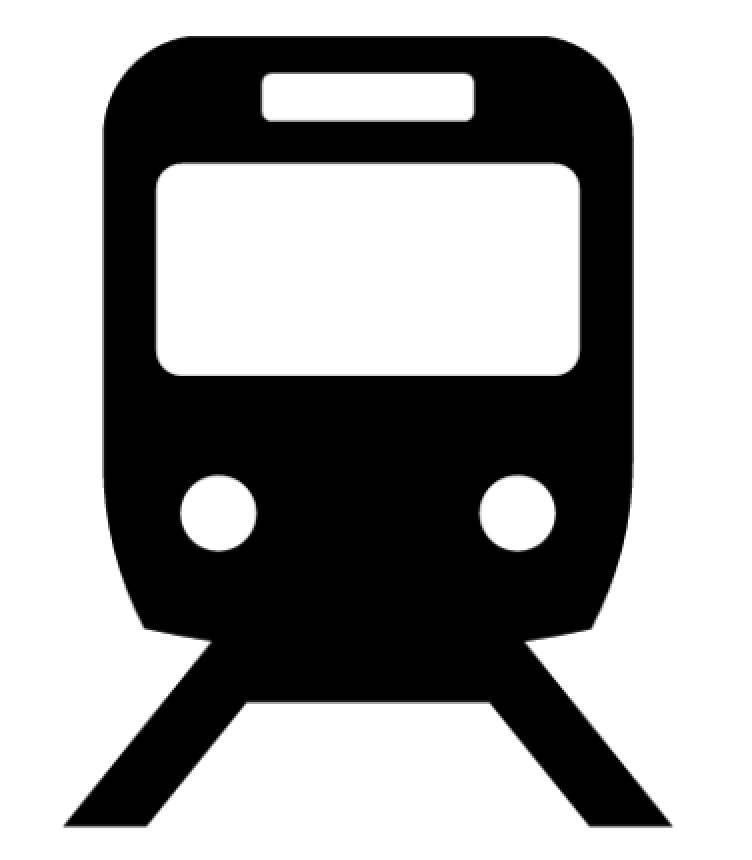| To Lubeck and back - with a trip on the Molli Bahn as a bonus Posted by eightonedee at 14:57, 4th September 2025 |     |
Why a trip to Lubeck? There were two reasons. Firstly, my wife, having studied various European cathedrals as part of a WEA course would like to see the one in Lubeck, and its historic city centre. She enjoyed our trip by rail to Aachen. Secondly, I like birdwatching along the Baltic coast in autumn, when many birds are on return migration from Scandinavia and the Arctic. My wife could not do a trip this autumn, so I decided to combine a birding trip with a “proof of concept” rail trip to see if it was possible and convenient to travel from home to Lubeck by rail in a day (and also do the return trip in a day).
I booked a Eurostar to Amsterdam, and Trainline produced an onward outward journey with changes at Osnabruck and Hamburg for a very reasonable 38-99 Euros and a return to Amsterdam from Lubeck with one change at Hannover for 63-99 Euros.
Here's part one of my account and impressions (spoiler alert - it's not the most positive part of the holiday!)
The Outward Journey.
At first mostly all went well. There was a slightly puzzling email from Eurostar about a week before departure telling me that the departure time from St Pancras was now 10-34 but arrival at Amsterdam would be at the same time – but this was the departure time I had booked and was shown on my ticket! There was also a problem with the train for a preceding Paris service, resulting in the need to change the set on that service involving a delay to both that service and the following Paris one, so that the waiting area after check-in and passport control became very crowded and access to it was closed for a while. Luckily, I was already inside, and had a seat. Our Amsterdam departure was not delayed.
The Eurostar journey was uneventful. There were only two negatives to report, my window seat turned out to be a pillar seat, and as a culinary tip I suggest avoiding the dry, chewy chicken and sundried tomato baguette. Apart from the poor alignment of seats and windows, the newer-type Siemens train was a pleasant and comfortable ride.
Arrival at Amsterdam Centraal was on time. It was my first visit after the recent works, which are still in progress on platform 14 alongside the platform used for Eurostar trains. I had just over an hour and a half to wait for my connection to Osnabruck at 17-59, so decided to have a tour of the extensive selection of eateries on the canal side of the station and have an early evening meal. These are one of the good features of Centraal, as you can feed yourself and enjoy a view out over the water. I selected the Brew Dog bar, but their mac’n cheese was not a good choice. Not only was it lukewarm, but the thin sauce didn’t have any cheese flavour to it to redeem itself. The New England pale ale was though very good.
The Osnabruck train was a joint DB (German) and NS (Dutch) operation, final destination Hannover. The former provided a rake of coaches that looked of similar vintage to the later BR mark 2 stock, with air conditioning, but no internal passenger information signage. DB also provided the on-board staff after Bad Bentheim, the first station in Germany. NS provided the locomotive and staff for the first part of the trip. It was clean and comfortable, if somewhat leisurely in its progress across the Netherlands, and lightly loaded. I’d guess that there were not more than 10-12 passengers in my coach at any one time during this journey. Travelling on a train with four-across seating with a much larger loading gauge that the UK brings home (again) how cramped five-across seating is at home. Full marks too to the train staff, who made announcements in German, English and Dutch before each stop that were clearly audible and included a list of times and platforms for onward connections.
We were 5 minutes late at Osnabruck, almost all that delay being due to having to wait for our platform to become free as explained by the announcement on board. It is a two-level station, with upper platforms serving lines that run approximately west to east and lower platforms those running approximately north to south. It is not a well-signed station, particularly at the upper level. There were two directional signs near where I disembarked, one for platform 1, and another for platforms 5 and 11-14. There were no signs for escalators or lifts visible nor mention of the other platforms, to the evident distress of an elderly man of (I’d guess) Turkish origins who was travelling with two large bags. The signs both led to staircases. As I had 32 minutes for my next train (27 after delay), I descended one to arrive in the foyer. This at least had a couple of food outlets and a newsagents open, and as it was a warm close evening an orange iced lolly provided welcome refreshment.
However, it was clear that the curse of DB had struck. My train, ICE 104 whose journey had started in Switzerland, was shown as being 23 minutes late. As I had an 18-minute connection at Hamburg, it would miss my connection. As I was ware of DB’s less-than-stellar reputation for timekeeping, I had checked and knew that there was a later train, leaving Hamburg for Lubeck at 00-06 that would get me there at 00-52. I had even seen that as a fallback there was a last train running an hour later.
Matters went from bad to worse. The main departure board in the foyer continued to show ever later estimated arrival times. Checking DB’s website, it stated that there had been a problem with a preceding train. Eventually the departure board settled on an arrival time at Osnabruck of around 22-06, some 43 minutes late. If it ran to time after Osnabruck, I should just make my 00-06.
By 22-04 or so, platform 3 was filling with passengers for my train. As we stood there, we could see the front lights of a train to the north, but no sign of anything to the south, from where our train should be coming. Eventually it arrived at 22-13, now some 50 minutes late. My next connection was looking doubtful.
At least the ICE train has on-board passenger information signage that goes through a cycle of information screens, so I could monitor progress (or lack of it). These started off showing an arrival at Hamburg Hbf of 00-03, just three minutes to get my onward train. The helpful train manager/guard told me which way I should go from the over-bridge at Hamburg, and which end of the platform I should head for. For a few hopeful minutes the estimated arrival time slipped forward to 00-02, but then it slipped back, notwithstanding indicated running speeds of 160-197 kph to end up at 00-08, two minutes after the departure of the service to Lubeck I hoped to catch. The guard helpfully gave me a form to apply for compensation for delay, which was in both English and German. It is not a generous scheme, 25% after an -hour’s delay, 50% after two hours.
I have now found a German website (www.zugfinder.net) that gives ratings for German train services baed on punctuality. Today's score for ICE104, based on the last month's performance is 26% percent punctuality based on less than 5 minutes late being "punctual". It also shows that on neither of the two days after I travelled did the train even reach Osnabruck, being terminated beforehand.
So I arrived at Hamburg Hauptbahnhof, the city’s main station with nearly an hour to wait for my last train. It is not a good place to be after midnight. It’s not well-lit, but is still quite busy, but many are well-lubricated or down-and-out. I was approached by a beggar on the over-bridge, and the end of the platform from which the Lubeck train would depart was not under the station’s impressive looking roof. There’s also not much by way of seating, but I found an empty bench in the dry and watched You Tube on my phone to pass the time. For a while I was joined by a youth with a bleeding cut on his wrist he was attempting to staunch with one of those small packs of paper tissues they sell at station shops. Eventually, my train, a four-coach double decker arrived and I boarded to await departure. Soon after, an elderly female beggar in dirty rainwear reeking of stale tobacco entered to train and went down it seeking donations.
I finally arrived seven minutes late (01-59) at Lubeck. Thankfully, my hotel was a 10 minute walk away, and they had previously confirmed that their reception was open 24 hours a day. I was glad of my bed!
Next time…a ride on the Molli Bahn!
| Re: To Lubeck and back - with a trip on the Molli Bahn as a bonus Posted by eightonedee at 20:44, 5th September 2025 |     |
The Molli Bahn
Having been to the area of this famous narrow-gauge railway twice before without riding the line, I could not really miss the opportunity to do so this time.
By way of background, the larger part of the German Baltic coast is in Mecklenburg-Vorpommern, the Land (or state) that runs from the border between the old West and East German states in the west to the Polish border in the east, and this area formed the northern part of the former East Germany (DDR). It had been the main coastal holiday area for pre-war Germany. However, it did not develop any large resort towns like Brighton, Blackpool or Bournemouth in England. Although Heiligendamm, one of the towns on the Molli Bahn, claims to be the oldest coastal resort town on the European continent, having been founded in 1793, it is still only part of the administrative area of the neighbouring town of Bad Doberan, the two together having a permanent population of 13,000, not much more than Minehead. Kuhlingsborn, the only other town on the line, which claims to be the largest German Baltic coastal resort has a permanent population of only 8,000, smaller than Swanage. In many ways the area is similar to North Norfolk, both in landscape and having become gentrified in recent decades. Although MVP, as the state is known, is one of the least prosperous in Germany, its coast has flourished as it has been re-opened to all of the country since reunification.
The railway was built as a 900mm gauge narrow-gauge light line in two stages. The first stage was the 4-mile section from Bad Doberan to Heiligendamm, completed by a private company in 1886. This was “nationalised” by the Grand Duchy of Mecklenburg, by then part of the German state, in 1890. The remainder of the line (another 5 ½ miles) to its current western terminus of Kuhlungsborn West was built in 1910. It became part of the national Deutsche Reichsbahn in 1920, and the ownership reflected the area’s subsequent political history, passing to the East German state railway after the war, then to DB after reunification. In 1995 it was acquired by a company set up by the local authorities in the area. It carried freight until 1965, but the need to tranship goods from the national standard gauge system meant that this was always a loss-making exercise. Since then, it has been a passenger-only service. Although the East German authorities seized most of the up-market holiday accommodation when they took control of the area, it remained a resort area, then for workers and party officials. As mentioned above, re-unification has brought about a return to its former genteel status, but the area is also popular with Germany’s large camping and caravanning community.
There’s a seven-day-a-week service throughout the year. Under the summer timetable from late March to early September, there are 11 services at about hourly intervals in each direction, crossing at Heiligendamm, and five services a day each way (with 8 on a few days during the festive season) during the winter. The services are timed to connect to mainline services in both directions at Bad Doberan. The timetable makes it clear that at quiet times a bus may be substituted for the train.
My visit took place on Sunday. I took the 10-35 from Kuhlungsborn West to Bad Doberan, and the first available return on the same stock at 11-36. My outward train was quite lightly-loaded, most of the passengers being young families, or grand-parent/grandchildren combinations. There’s a range of fares, with cheaper fares if you travel part only rather than the full length of the line. Most of my fellow outward passengers opted for the whole line journey, and there were two young families travelling with luggage who changed trains with the mainline at Bad Doberan.
The train comprised a 2-8-2 tank engine, one of a small fleet of four that comprise the main motive power fleet of the line, a luggage/brake/guard’s van and 9 short bogie coaches, with open veranda vestibules at each end and three-across seating, mostly being 36-seaters, although some have a couple of sets of seats missing to provide luggage space. The locomotive runs around its train in the old-fashioned manner at each end of the journey.
The journey runs through the generally sprawling, low-rise urban area of Kuhlingsborn, much of which appears to be well-tended holiday homes or holiday lets, with two further stations in the town, before running alongside a road then out between fields parallel to the coast but hidden by a linear wood from it. There’s a stop, comprising a simple platform for a large campsite at Steilkuste. The train then runs into woodland, before arriving at Heiligendamm, where there is a crossing loop, and continues largely alongside the main road into Bad Doberan. Here is the section of running along the street, with two on-street stops which are little more than slightly raised kerbs, before crossing a cross-roads that is light-controlled and running into the main station. Grahame’s post in May, with accompanying pictures (see - A trip on the Molli - https://www.firstgreatwestern.info/coffeeshop/index.php?topic=30286.msg361625#msg361625) gives a good impression of this. There were no “Weymouth in the old days” problems with cars parked in the path of the train!
It costs 18-50 Euros for the round-trip, no discounts for retired folk. Everything seems maintained to the highest standard. There’s none of the lines of dilapidated rolling stock awaiting its turn for restoration, or buildings awaiting repurposing that characterise most heritage lines. This is a line with a consistent working history, and clearly looked after with care and pride. It is also well-loved, with much smiling and waving from along the trackside, and many phones raised for pictures by tourists there. My only (mild) complaint is that the catering facility at Bad Doberan was closed, unlike those at the other stations with cafes, so no welcome drink or ice-cream on a hot day.
At Bad Doberan, the west-bound connecting service was already standing at the eastern end of the mainline platform, awaiting its east-bound counterpart to arrive (which it soon did) to perform their “Penryn” manoeuvre, and there was a bus waiting on the other side too.
The return journey was somewhat busier, with perhaps more elderly, rail enthusiasts and passengers travelling part only of the way. It was still far from crowded. Time-keeping was not to-the-minute, but not far off, the only delay of a few minutes was being caught at the cross-roads lights coming into Bad Doberan.
All in all, a very pleasant experience. There will be many UK heritage railways that wish they could combine the tourist and public transport functions like this, and no doubt quite a few regular DB Inter-City passengers who wished they had a similar level of service. It is probably a happy accident of history that this line and other similar lines in the old DDR and their services have survived. If you are in the area, I would strongly recommend taking a ride.
| Re: To Lubeck and back - with a trip on the Molli Bahn as a bonus Posted by grahame at 21:57, 5th September 2025 |     |
Fantastic writeup, thank you ... and bringing much of the history that's new to me into the story.










